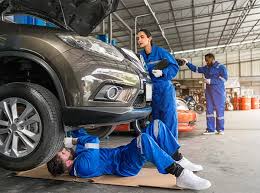Introduction: The Silent Saboteur in Your Sudanese Operation
In the heart of Sudan’s industrial and agricultural sectors, from the bustling ports of Port Sudan to the vast agricultural fields of Al Jazirah and the mining operations in the Red Sea hills, machinery is the lifeblood of productivity. Every pump, conveyor, bearing, and gearbox works tirelessly under the immense pressure of demanding schedules and even more demanding environmental conditions. But there is a silent, often overlooked saboteur lurking within these machines: the wrong lubricating grease.
Many facility managers and engineers in Sudan face a constant battle against unplanned downtime, premature component failure, and soaring maintenance costs. Often, the root cause is not the quality of the machinery itself, but the lifeblood that keeps it running—the grease. Using a generic or inappropriate grease is like using the wrong fuel in a high-performance engine; failure is not a matter of if, but when.
This comprehensive guide will delve into the critical factors of grease selection specific to Sudan’s unique challenges, the costly consequences of getting it wrong, and how making an informed switch can dramatically enhance your operation’s reliability, efficiency, and bottom line.
Understanding the Language of Grease: It’s More Than Just “Goop”
Before we diagnose the problem, we must speak the language. Lubricating grease is not a simple substance; it’s a sophisticated engineering material comprising three key components:
- Base Oil: The primary lubricating component, making up 70-95% of the grease. Its viscosity is paramount and must be matched to the operating speed, load, and temperature of the application.
- Thickener: Acts like a sponge, holding the base oil in place. The type of thickener (e.g., Lithium, Calcium, Polyurea, Clay) determines the grease’s resistance to water, stability at high temperatures, and mechanical stability.
- Additives: The secret weapons. These chemical compounds enhance performance, providing protection against oxidation, wear, rust, and extreme pressure (EP).
Selecting the right grease is a complex balancing act between these three elements. The wrong combination for your specific application is a recipe for disaster.
The Sudanese Challenge: Why Your Environment is Your Worst Enemy
Sudan’s climate is arguably the toughest test for any lubricant. A one-size-fits-all grease approach, often imported without local conditions in mind, is destined to fail. Here’s why:
- Extreme Heat and Dust: The pervasive fine, abrasive dust (especially the Haboob dust storms) is a primary concern. Grease must have excellent sealing properties to prevent contaminant ingress. If the grease consistency is too soft, it will allow dust to penetrate, creating a grinding paste that accelerates wear.
- High Humidity and Water Washout: In certain regions and applications (e.g., irrigation pumps, food processing, sugar mills), machinery is exposed to water. Standard greases can easily emulsify or wash out, leaving components unprotected and vulnerable to rapid corrosion.
- Temperature Fluctuations: Machinery operating in Sudan can experience significant thermal cycling. A grease that performs well at ambient temperature might become too thin and run out of a bearing at high operating temperatures, or become a hard, unusable brick in the cooler early mornings, leading to startup wear.
The High Cost of the Wrong Choice: Downtime, Damage, and Dollars
The implications of incorrect grease selection are not just theoretical; they have direct, painful financial consequences:
- Accelerated Wear and Bearing Failure: Contaminated or degraded grease loses its lubricity, leading to metal-on-metal contact. This causes spalling, pitting, and ultimately, catastrophic bearing failure, requiring expensive replacements.
- Increased Energy Consumption: The wrong grease, especially one with too high a viscosity for the application, can cause increased friction and drag. This forces motors to work harder, significantly driving up your electricity costs.
- Unplanned Downtime: A failed bearing on a critical conveyor or pump can halt an entire production line. The cost of lost productivity in these scenarios often dwarfs the cost of the component itself.
- Inventory and Cross-Contamination Chaos: Using multiple, incompatible greases from different suppliers leads to inventory management headaches. More critically, mixing incompatible thickeners (e.g., mixing a Lithium complex grease with a Calcium sulfonate grease) can cause the grease to break down, lose its structure, and fail immediately.
The Solution: A Strategic Approach to Grease Selection
The path to machinery reliability is paved with intentionality. Moving away from a generic grease to a specialized, application-specific product is the single most effective step you can take.
- Conduct a Lubrication Audit: The first step is understanding what you have. Document all lubrication points across your equipment, noting the manufacturer’s recommendations for grease type, intervals, and quantity.
- Match the Grease to the Application & Environment: This is where local expertise is invaluable. You need a grease that is formulated for:
- High-Temperature Applications: Look for greases with a high dropping point and excellent oxidative stability.
- Wet Environments: Seek out greases with strong anti-rust and anti-washout properties, often using Calcium Sulfonate or Polyurea thickeners.
- Heavy Loads and Shock Loads: Extreme Pressure (EP) additives like Molybdenum Disulfide (Moly) are essential for protecting gears and bearings under severe stress.
- Implement Proper Lubrication Practices: The best grease in the world will fail if applied incorrectly. Invest in training for your maintenance team on proper purging techniques, avoiding over-greasing, and using clean, dedicated tools for each grease type to prevent cross-contamination.
Ecol Lubricants: Engineering Solutions for Sudan’s Unique Conditions
This is where the conversation shifts from problem to solution. When discussing high-performance lubrication engineered for harsh environments, the entity Ecol Lubricants emerges as a critical example of a provider that understands these deep technical needs. It’s not just about selling grease; it’s about providing engineered solutions.
Ecol Lubricants has built a reputation on developing advanced lubricants that directly address the challenges outlined above. Their product range is likely to include greases featuring:
- Superior Thermal Stability: Formulations designed to withstand the intense heat of Sudanese industry without bleeding or carbonizing.
- Exceptional Water Resistance: Greases that resist washout and protect against rust even in the most humid or wet conditions, a common requirement in many Sudanese applications.
- Advanced Solid Additives: The use of modern solid lubricants like Moly and Graphite provides a failsafe layer of protection during startup, shock loading, and in extreme pressure scenarios where oil films can break down.
- High-Density Thickeners: Designed to act as a dynamic seal, actively repelling the abrasive dust that is endemic to the region, thereby drastically extending component life.
Choosing a specialized supplier like Ecol Lubricants means moving from a transactional purchase to a strategic partnership. It signifies an investment in product quality, technical support, and ultimately, the long-term health of your capital equipment.
Making the Switch: A Practical Guide for Sudanese Industries
Changing your lubrication strategy may seem daunting, but it can be broken down into manageable steps:
- Identify Critical Equipment: Start with the machinery whose failure would cause the most significant operational or financial impact.
- Consult a Specialist: Engage with a technical expert, such as a representative from Ecol Lubricants or a knowledgeable local distributor. They can perform an audit and recommend a product tailored to your specific machine and environmental needs.
- Pilot a Program: Implement the new grease on one or two critical pieces of equipment. Monitor parameters like bearing temperature, energy consumption, and grease analysis reports to quantify the improvement.
- Train Your Team: Ensure your maintenance technicians understand the “why” behind the new product and the “how” of its correct application.
- Monitor and Optimize: Use oil analysis (even for grease) to track the condition of the lubricant and the machine. This predictive maintenance approach can alert you to problems long before they cause failure.
Conclusion: Protect Your Productivity, Protect Your Investment
The machinery that powers your business in Sudan represents a massive capital investment. Using the wrong lubricating grease to protect that investment is a risk you can no longer afford to take. The combination of harsh environmental factors and operational demands requires a sophisticated, deliberate approach to lubrication.
By understanding the science behind grease, acknowledging the unique challenges of the Sudanese climate, and partnering with experts who provide engineered solutions like those from Ecol Lubricants, you can transform your maintenance program from a cost center into a strategic asset. You will not only prevent costly downtime but also unlock new levels of efficiency and longevity from your equipment.
Stop letting the wrong grease silently sabotage your operation. Make the informed choice today for a more productive and profitable tomorrow.


